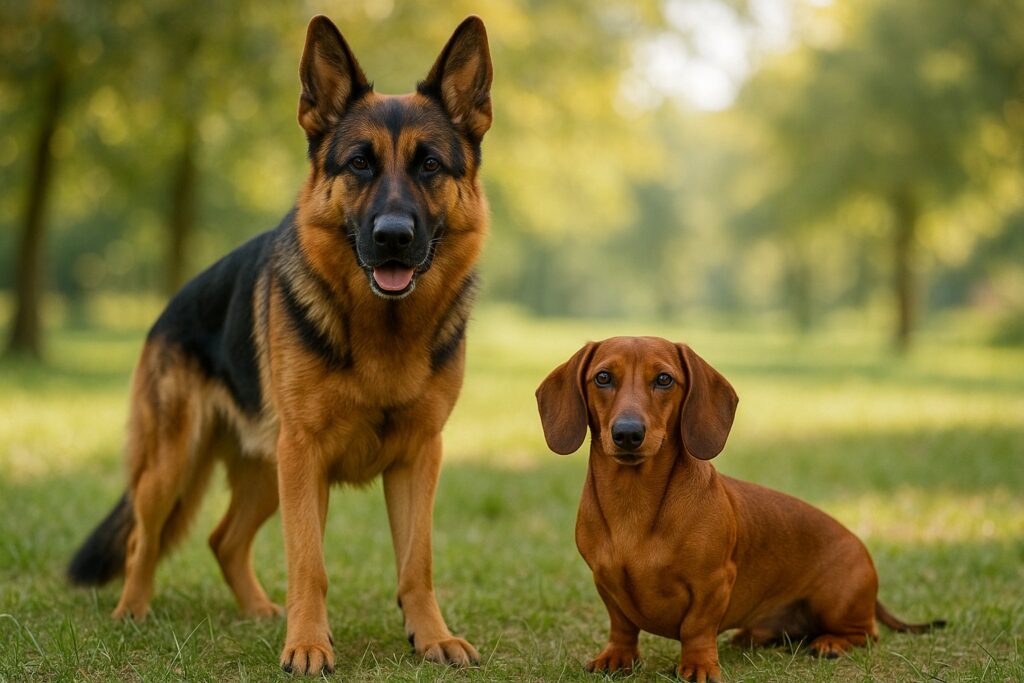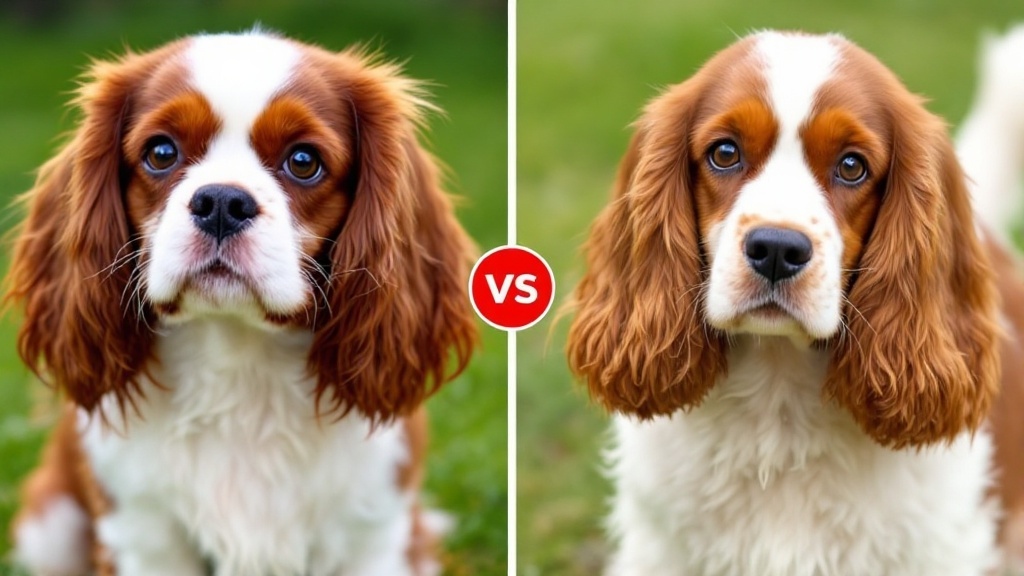Are you searching for a loyal family dog or a hardworking companion? German Shepherds and Australian Shepherds are both popular, and while they might look similar at first glance, they’re pretty different once you get to know them.
German Shepherds are bigger, more protective, and often work as police or service dogs. Australian Shepherds are smaller, bursting with energy, and shine at herding and agility.
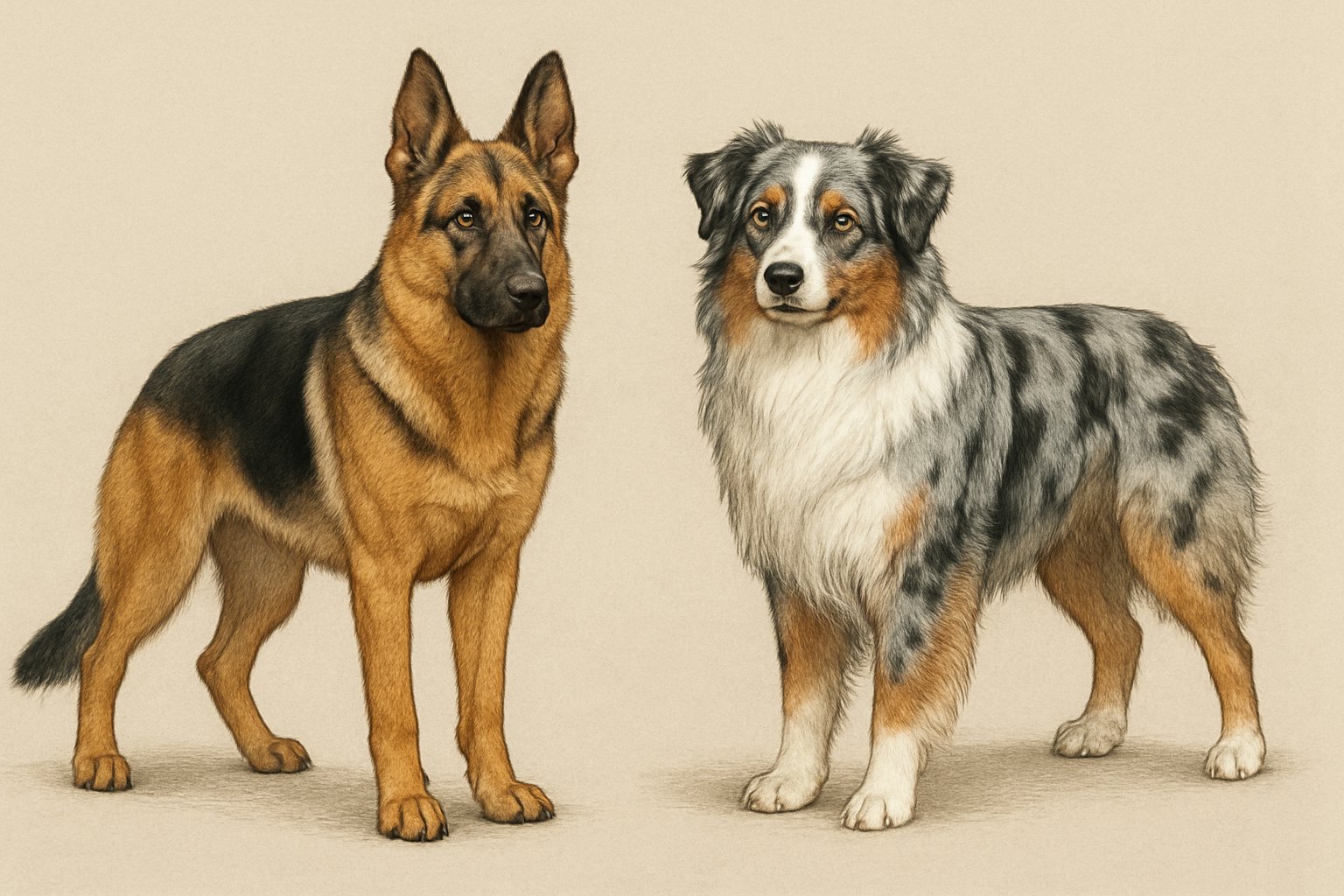
They both have “shepherd” in their names, but don’t let that fool you. These breeds come from different places and bring their own personalities to the table.
It’s worth knowing what you’re signing up for in terms of looks, behavior, and care before you pick one.
Key Takeaways
- Each breed has its own unique story and purpose.
- They look different and need different amounts of exercise.
- The right dog really depends on how you live and what you want.
Breed Origins and History
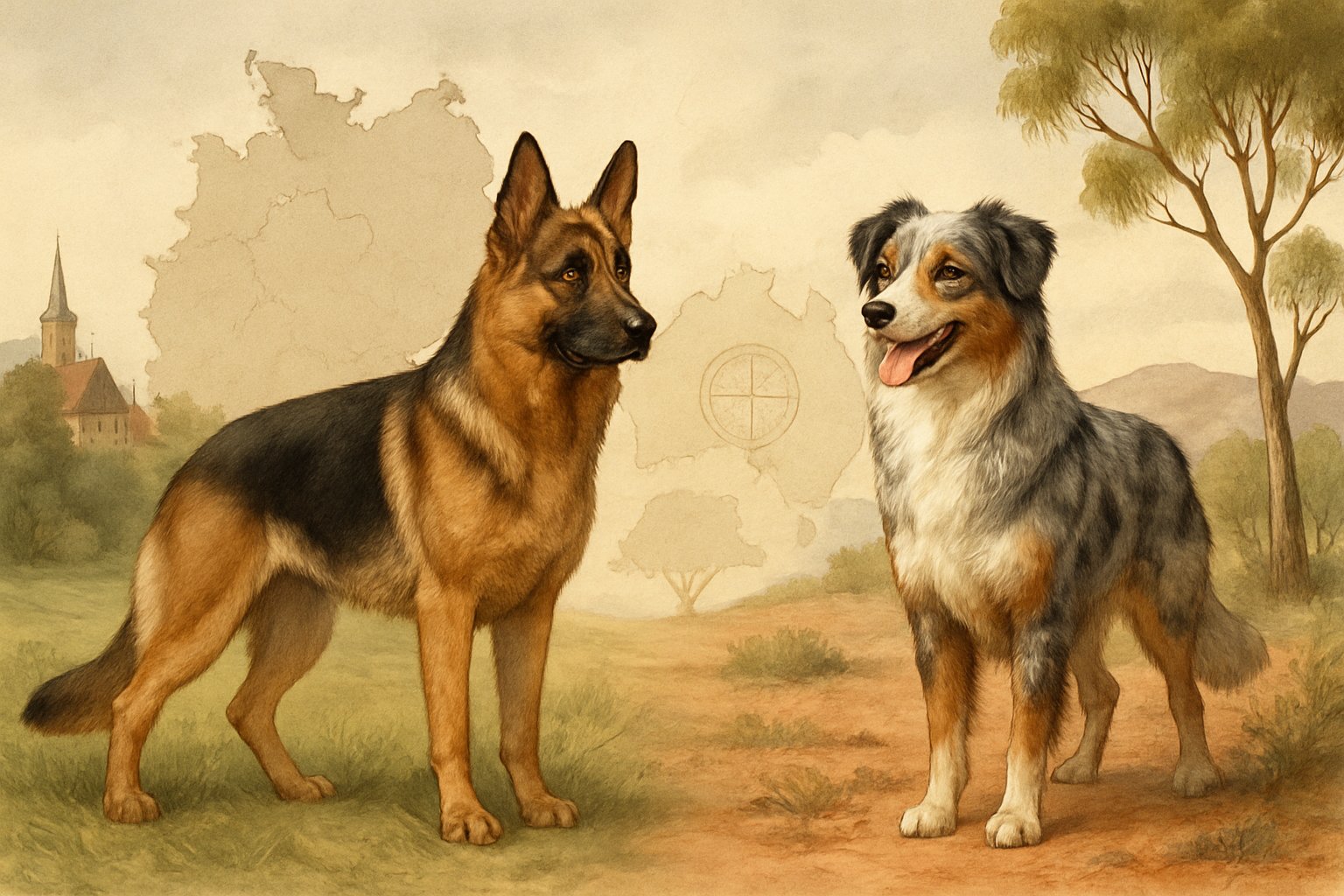
Both the German Shepherd and Australian Shepherd started out as herding dogs, but their stories go in totally different directions. Knowing how they got started helps you understand why they act the way they do today.
German Shepherd Origins
The German Shepherd’s story starts in late 1800s Germany. Captain Max von Stephanitz, a guy with a vision, wanted a smart, strong, and loyal herding dog.
He picked out dogs from all over Germany for their brains and work ethic. By 1899, he’d registered the first German Shepherd, Horand von Grafrath.
Over the years, the breed built a reputation for versatility and hard work. Some folks still call them “Alsatians,” especially in Europe after World War I.
The American Kennel Club (AKC) gave the breed official recognition in 1908. Now, you’ll see German Shepherds working with police, military, and as service dogs.
Australian Shepherd Origins
The Australian Shepherd’s name is a little misleading. This breed actually got its start in the United States during the 1800s.
Despite the name, these dogs became ranch favorites in the American West. Their ancestors probably traveled from Europe to Australia, and then landed in the U.S.
Basque shepherds brought their herding dogs along as they looked for work. American breeders shaped the Aussie into the smart, nimble herder we know now.
The AKC didn’t recognize the Australian Shepherd until 1991. Today, you’ll spot Aussies on ranches and crushing it in dog sports.
Development as Herding Breeds
Both breeds were created to manage livestock, but the settings were pretty different. German Shepherds herded sheep in Germany’s changing climates.
They needed to be brave, easy to train, and able to tackle tough jobs. Australian Shepherds worked the wide-open, rugged American landscape.
Speed, adaptability, and stamina were key. Breeders wanted them to handle anything from sheep to cattle.
Both breeds ended up in the herding group of the American Kennel Club. Their instincts to herd and protect are still strong today.
Key differences:
| Breed | Origin | First AKC Recognition | Common Role |
|---|---|---|---|
| German Shepherd | Germany | 1908 | Herding, police, service |
| Australian Shepherd | United States | 1991 | Ranch, sport, herding |
Physical Characteristics and Appearance
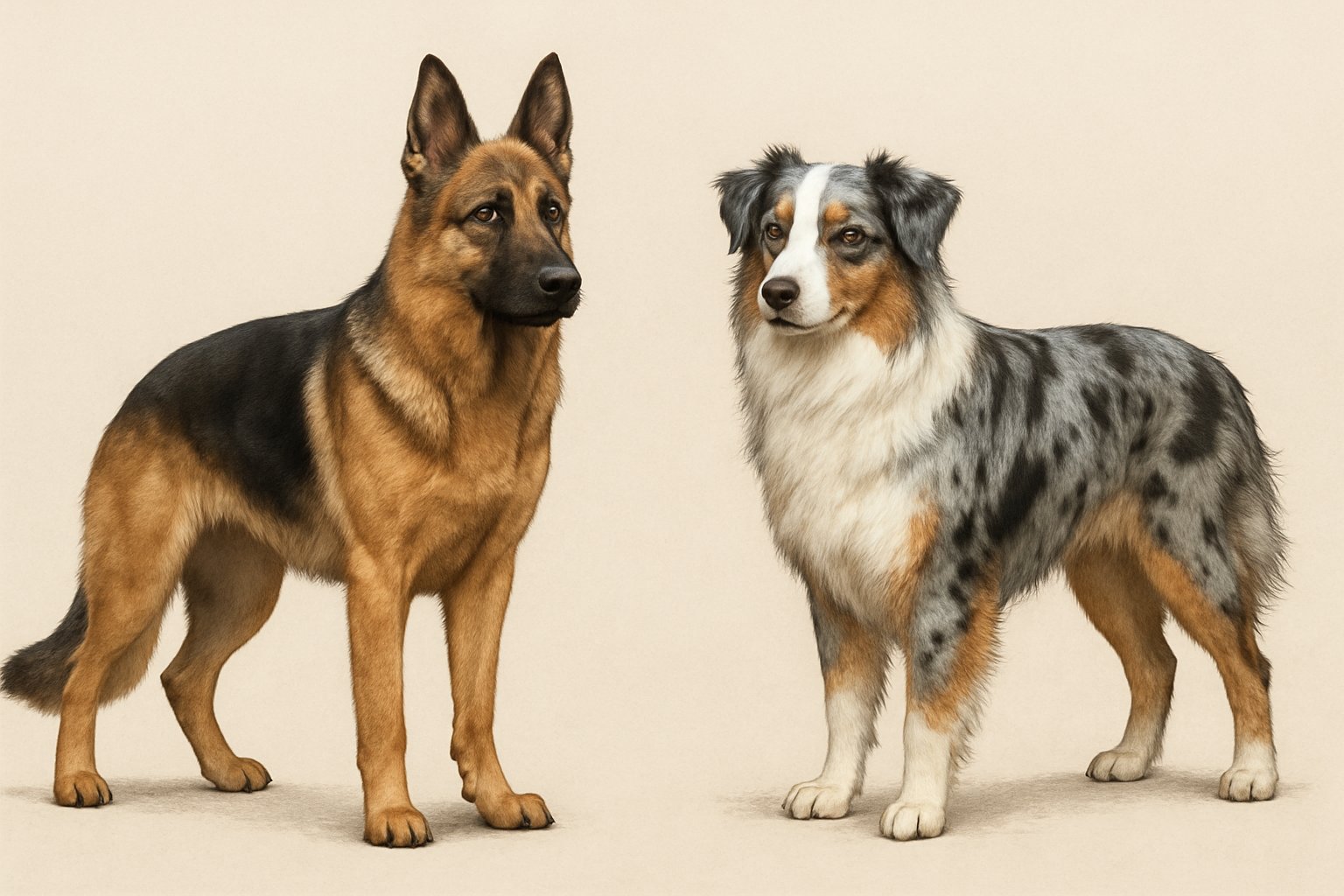
Both breeds are athletes, but when you look closer, their size, coats, and the way they move are pretty different.
Size and Build Comparison
German Shepherds are bigger and more robust than Aussies. Adults stand about 22–26 inches tall and weigh 50–90 pounds.
They’re built for tough jobs like police work or protection. Australian Shepherds are medium-sized, standing 18–23 inches at the shoulder and weighing 40–65 pounds.
They’re compact, agile, and a bit longer than they are tall. Aussies have well-balanced legs and feet, perfect for quick moves.
German Shepherds have a straight back with a slight slope, broad chest, and strong hindquarters. Aussies look a little rectangular and never bulky.
Both breeds are muscular, but German Shepherds look more powerful, while Aussies look lighter on their feet.
Coat Colors and Types
German Shepherds have a double coat that’s medium-length and dense. You’ll see them in black and tan, sable, all black, and sometimes blue.
Their thick fur helps them handle all sorts of weather. Australian Shepherds also have a double coat, but it’s a bit longer and wavier.
Aussies come in blue merle, red merle, black, and red, with or without white or tan. Some have really striking marbled colors.
Both breeds shed all year, but German Shepherds tend to blow their coats more during the seasons. Their fur feels a little rougher, while Aussies have softer, feathered hair on their chest, legs, and tail.
Gait and Structure
German Shepherds are known for their smooth, powerful gait. They move with a long reach in front and a strong push from the back.
Their steps look pretty effortless, and their legs and feet are solid and steady. Australian Shepherds have an easy, quick gait that lets them turn on a dime.
Their build helps them move fast and change direction while they’re herding. Aussies have flexible legs and slightly oval feet.
From the side, German Shepherds cover more ground, but Aussies stay light and quick. Both should look balanced and healthy, ready for action.
Temperament and Personality
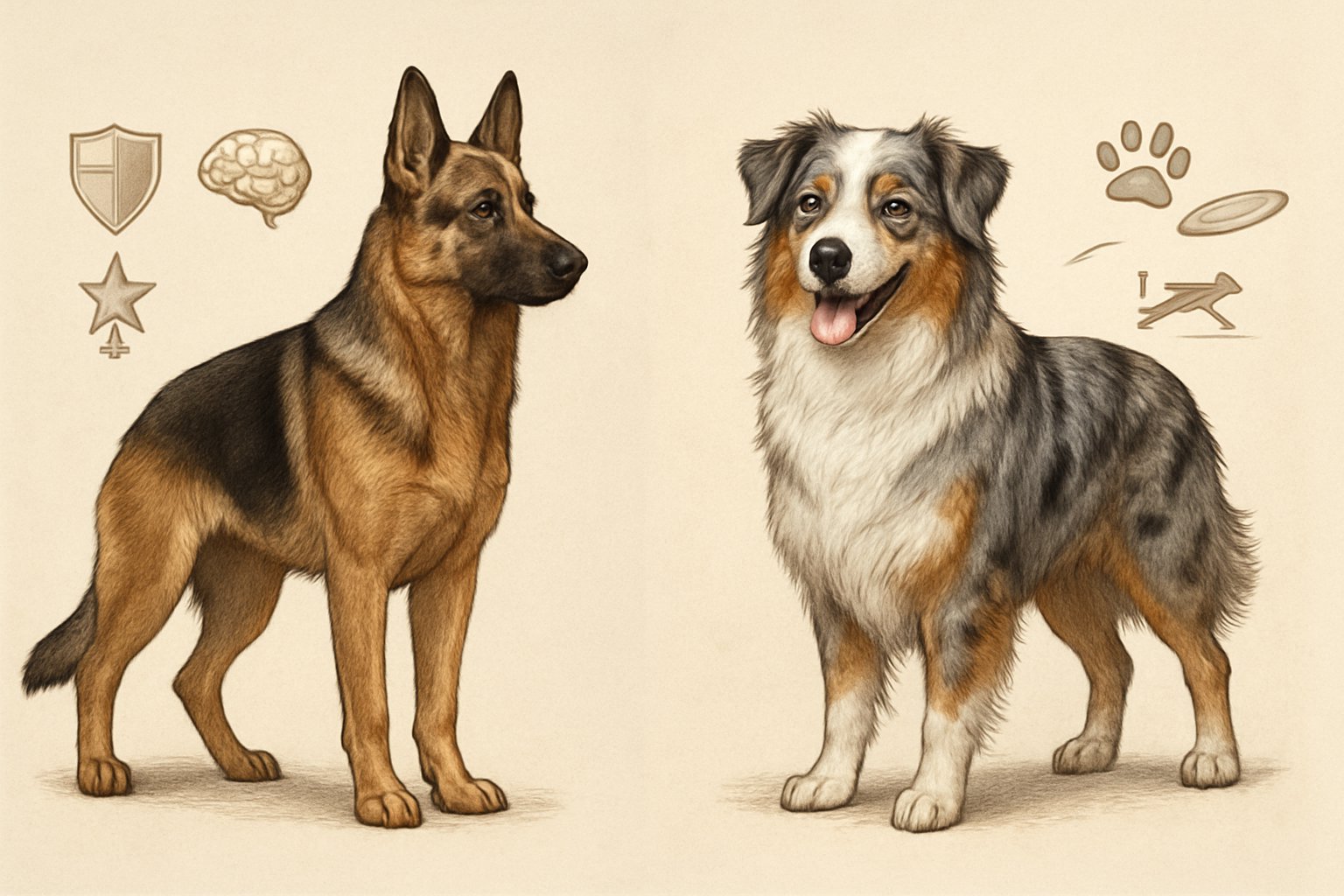
Both breeds are smart, playful, and loyal, but they show it in their own ways. Your daily life, dog experience, and time for training all matter with these two.
Intelligence and Trainability
German Shepherds are among the smartest dogs out there. They pick up commands quickly and thrive with clear, consistent training.
They love solving problems and often work as police or service dogs. Australian Shepherds are also super bright and eager to learn.
They get bored easily, so you’ll need to switch things up. Aussies respond best to short, upbeat training sessions and tend to be more sensitive to harsh words.
Both breeds like positive reinforcement, but the Aussie might need a gentler touch.
| Trait | German Shepherd | Australian Shepherd |
|---|---|---|
| Intelligence | Very High | Very High |
| Obedience | Excellent | Excellent |
| Training Style | Structured | Upbeat, varied |
Energy and Activity Levels
Australian Shepherds have energy to spare. They’ll want to play, run, or work all day if you let them.
You’ll need to give them plenty of exercise and mental games—walks, runs, fetch, or agility are all good. Without enough to do, Aussies can start chewing or digging.
German Shepherds are also energetic, but usually a bit calmer indoors. They’re happy with a daily routine and love having a job.
If you’re active or have a yard, either breed can work, but Aussies tend to be more demanding when it comes to activity.
Ways to keep them happy:
- Daily walks and runs
- Dog sports (agility, herding, obedience)
- Interactive toys and puzzles
Protectiveness and Loyalty
German Shepherds have a reputation for loyalty and protectiveness. They act as natural guardians and might be cautious with strangers.
They bond tightly with family and will probably follow you from room to room. Australian Shepherds are loyal too, but they’re usually friendlier with new people.
They might try to herd kids or pets, showing off their instincts. Both breeds need early socialization to avoid becoming too shy or overly protective.
They’re gentle and loving with family when raised right. Expect them to alert you to visitors and stick close to their favorite humans.
Roles, Abilities, and Working Purposes
German Shepherds and Australian Shepherds both shine as working dogs, but their talents take them in different directions. They can herd, protect, or just be a great family dog, depending on what you need.
Herding and Working Roles
Both breeds started as herders. You’ll notice their strong instincts to chase and control animals.
The Australian Shepherd is famous for herding on ranches in the U.S. They’re fast, energetic, and work closely with people to move livestock.
Aussies often win at agility competitions thanks to their speed and smarts. German Shepherds were bred for a wider range of jobs.
They herded sheep in Germany, but their strength and focus helped them branch out. Now, they do everything from police work to search-and-rescue.
Guard and Search and Rescue Abilities
German Shepherds are top picks for guard dogs. Police and military units trust them for protection, tracking, and rescue missions.
Their solid build and sharp instincts make them reliable in tough situations. Australian Shepherds aren’t usually used as guard dogs, though they’ll bark if someone’s at the door.
They’re better suited for herding or being part of the family. Aussies can do search and rescue, but you’ll see them more in sports or as therapy dogs.
If you want a guard or rescue dog, German Shepherds are usually the go-to.
Family Companionship and Guide Dog Uses
Both breeds make great family companions. German Shepherds are often chosen as guide dogs and service dogs, especially for people needing physical help.
Their calm attitude and trainability are a big plus. Australian Shepherds love being active family dogs and often land on lists of the best dogs for kids.
They like to play, exercise, and stay busy with their people. Aussies aren’t as common as guide dogs but do well offering companionship or emotional support.
Both breeds need families that have time for exercise and training.
Living Needs and Care Considerations
German Shepherds and Australian Shepherds are both active dogs. They need regular physical and mental activity.
Your living space, daily schedule, and willingness to meet their needs will help you decide which breed fits your life.
Exercise and Mental Stimulation
Both breeds need daily exercise to stay healthy and happy. German Shepherds usually want 1-2 hours of activity every day.
Australian Shepherds often need even more—sometimes over 2 hours. Walks, jogging, and fetch all help burn off their energy.
If they don’t get enough exercise, they’ll get bored fast. That’s when you might see chewing, barking, or other trouble.
Mental stimulation matters just as much. Try puzzle toys, training sessions, or games.
Both breeds learn quickly and love challenges like agility, obedience, or herding games. Mix things up to keep their minds sharp.
Housing and Apartment Living
German Shepherds and Australian Shepherds are medium to large dogs. They really do best in homes with a yard or access to safe outdoor spaces.
Apartment living isn’t impossible, but it’s not ideal. You’ll need to commit to frequent walks and give them chances to run and play off-leash in fenced areas.
Both breeds can bark more than the average dog, especially if they’re bored. If your walls are thin or your neighbors are noise-sensitive, it could become an issue.
Lifespan and Health
German Shepherds live about 9 to 13 years. Australian Shepherds tend to live a bit longer, around 12 to 15 years.
Lifespan depends on genetics, diet, and care. German Shepherds can face health issues like hip and elbow dysplasia, degenerative myelopathy, and some digestive problems.
Regular vet check-ups and keeping them at a healthy weight help lower their risks. Australian Shepherds can have hip dysplasia too, plus eye problems like cataracts, and some react badly to certain meds.
DNA tests and regular eye exams are smart for Aussies. Here are some health care tips:
- Feed a balanced diet
- Give daily exercise
- Schedule regular vet visits
- Watch for breed-specific issues
Breed Comparison and Choosing the Right Dog
German Shepherds and Australian Shepherds are both smart, energetic, and have strong herding backgrounds. Picking between them really depends on your living situation, dog experience, and daily routines.
Similarities and Differences
Both breeds are medium to large working dogs bred for herding livestock. They need lots of exercise and love tasks that challenge them, like agility or obedience.
| Trait | German Shepherd | Australian Shepherd |
|---|---|---|
| Size | 50–90 lbs, 22–26 in | 40–65 lbs, 18–23 in |
| Coat | Medium, dense, straight | Medium, wavy, double |
| Shedding | Heavy | Moderate to heavy |
| Energy Level | High | Very High |
| Lifespan | 9–13 years | 12–15 years |
German Shepherds usually feel more protective and often work as police or service dogs. Aussies are super active and love sports, agility, and family play.
Which Breed Fits Your Lifestyle?
German Shepherds thrive on structure and routines. If you want a loyal guard dog that likes working closely with you, a German Shepherd could be your match.
Australian Shepherds need even more activity and hate being alone for long stretches. They really shine in active homes—think daily runs, games, or sports like flyball.
If you live in a small apartment, honestly, neither breed is a great fit. Consider small dogs like the Chihuahua or Havanese. If you love herding instincts, maybe check out the Border Collie or Australian Cattle Dog too.
Considerations for Families and Activities
Both dog breeds can fit well in families, but their needs aren’t quite the same. German Shepherds usually show patience with children, though they need training to avoid becoming too protective.
It’s important to socialize them early with other pets and family members. Australian Shepherds, on the other hand, are super playful and sometimes try to herd kids or other animals.
That herding can be entertaining, but honestly, it might not work for every household. Both breeds really need a lot of space, so having a backyard is a big plus.
If you’re the type who loves long hikes or getting into dog sports, either breed might suit you. But if you’ve got a smaller place or less time, you might want to look at breeds like the Shiba Inu, Whippet, or maybe a mixed breed that’s a little more laid-back.


